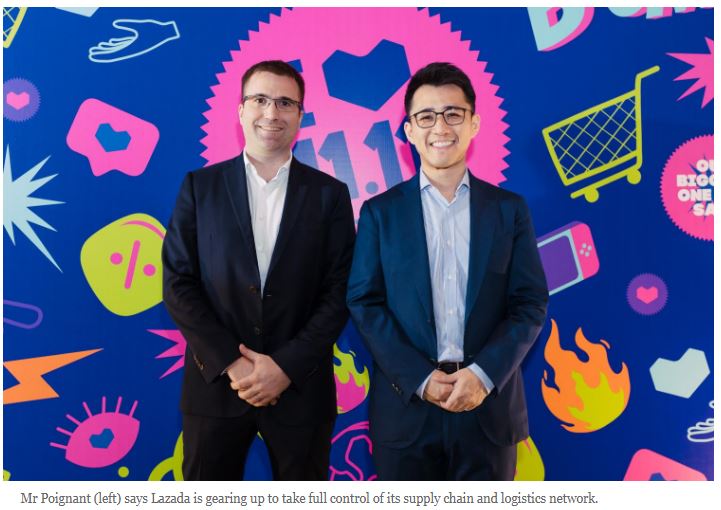Lazada prepares for Asean efficiency
Southeast Asia’s largest e-commerce site, Lazada, aims to improve the region’s logistics and digital payments infrastructure as it prepares for its 11.11 megasale.
“We need to address the challenges of Southeast Asia,” said Pierre Poignant, chief executive of Lazada Group. “We have an inefficient logistics industry, a very low penetration for online payments and a fragmented retail landscape.”
Lazada has 50 million active users per year and has seen over 100% growth year-on-year over the first three quarters this year.
To improve regional logistics, Mr Poignant said Lazada is taking full control of its own supply chain and logistics network. Already 75% of parcels are sorted by Lazada warehouses and 70% of parcels are delivered by the in-house delivery team Lazada Express. The company is also opening new collection points for customers around the region.
“The biggest thing in this business is trust and delivering a consistent experience to our customers,” he said. “We want to build up the supply chain around us and control the logistics network.”
The company is addressing payments by building the largest cash-on-delivery payment network in Southeast Asia with the objective of moving customers from cash to online payments on later purchases. Some 83% of Lazada’s customers use cash on delivery, in a region where 91% of people do not have credit cards.
Mr Poignant said Lazada’s strategy is to push customers towards digital payments like Lazada’s e-wallet.
Lazada’s biggest annual sale, 11.11, comes from its main backer, China-based Alibaba. To drive sales, the company is giving out over 50 million vouchers, offering 8 million deals on products and providing US$1 million (30.3 million baht) in e-wallet incentives. In 2018, Lazada saw 1.3 billion visits during the 11.11 and 12.12 shopping festivals.
Southeast Asia’s internet economy, which includes e-commerce, is expected to be worth $300 billion by 2025 according to a study by Google-Temesek, up from $100 billion this year.
Internet economies in Malaysia, Thailand, Singapore and the Philippines are growing by 20-30% annually, while Vietnam’s and Indonesia’s are growing 40% per year.
“The market in Southeast Asia is growing fast and has only just begun,” Mr Poignant said. “The fact we have so many competitors and big players shows the potential of the market.”
Lazada plans to expand operations in Thailand and is opening a new warehouse in the country’s Eastern Economic Corridor. Alibaba, which owns a controlling interest in Lazada, has stated the importance of Thailand geographically for its regional logistics network.
Jing Yin, Lazada Group’s co-president, said Thai customers differ from others in the region as they stay up very late shopping and are heavily mobile shoppers.
“Shopping behaviours differ between countries, but female-oriented products consistently sell very well,” Mr Yin said.
Some 29% of purchases from Lazada by order volume are in fashion and accessories, 28% in fast-moving consumer goods and 17% in electronics.
Source: https://www.bangkokpost.com/business/1779399/lazada-prepares-for-asean-efficiency


 Thailand
Thailand




